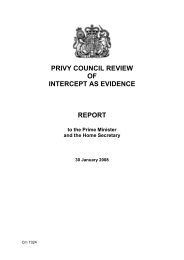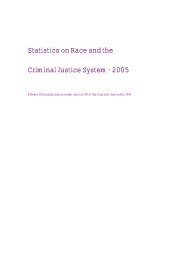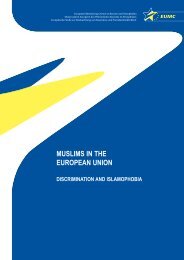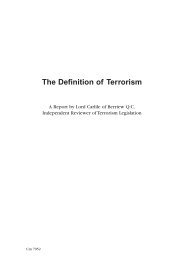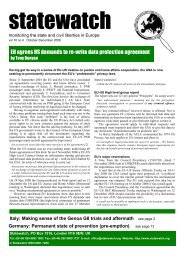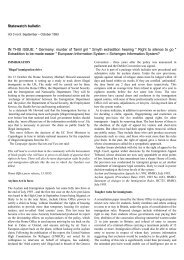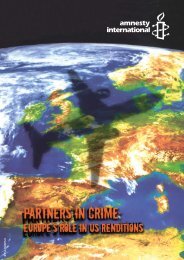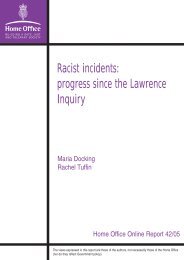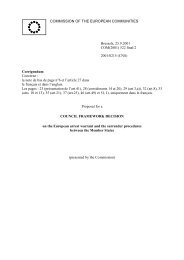RACIST VIOLENCE IN 15 EU MEMBER STATES - Cospe
RACIST VIOLENCE IN 15 EU MEMBER STATES - Cospe
RACIST VIOLENCE IN 15 EU MEMBER STATES - Cospe
You also want an ePaper? Increase the reach of your titles
YUMPU automatically turns print PDFs into web optimized ePapers that Google loves.
<strong>RACIST</strong> <strong>VIOLENCE</strong> <strong>IN</strong> <strong>15</strong> <strong>EU</strong> <strong>MEMBER</strong> <strong>STATES</strong> - A Comparative Overview of Findings from the RAXEN NFP Reports 2001-2004<br />
Recognition of racist violence as part of a continuum helps us to understand how<br />
‘victims’ experience racist incidents, and why they react as they do to criminal<br />
justice intervention/non-intervention.<br />
3.3.2. Racist violence as repeat victimisation<br />
Crime surveys have been able to reveal the extent to which a small proportion of<br />
all crime victims are disproportionately victimised. In other words, if we look at<br />
people’s experiences of victimisation over the last twelve months, or a longer<br />
period, we are able to see that certain individuals are repeatedly victimised. 69<br />
Repeat victimisation can target anyone, and can encompass a range of crimes from<br />
personal to property crime. For example, the same property, from a home to<br />
business premises, can be repeatedly victimised for a variety of reasons to do with<br />
both the offender’s opportunities and motives to offend, and the attractiveness of<br />
the property as a target. Certain properties and certain individuals or groups of<br />
people are more likely than others to be repeatedly victimised by certain types of<br />
crime/s and/or certain types of offender/s.<br />
Focusing on personal experiences of victimisation, crime surveys have revealed<br />
that the following groups, amongst others, are particularly vulnerable to repeat<br />
violent victimisation: child victims of sexual assault; female victims of domestic<br />
violence; young men; minority ethnic groups.<br />
In contrast to the reality that much of racist violence is on-going repeat<br />
victimisation, the criminal law is only able to approach racist violence as single<br />
incidents. The criminal justice system is set up to respond to individual acts that<br />
break the law. Because of this, victims’ on-going experiences of victimisation<br />
cannot be accommodated within the framework of criminal law. This means that<br />
racist violence is neglected as repeat victimisation. In response, crime surveys are<br />
able to capture racist violence as a series of events, over a period of twelve months<br />
or more, as they impact on victims.<br />
69<br />
Farrell, G. (1992) Multiple Victimisation: Its Extent and Significance, International<br />
Review of Victimology, 2, 85-102; Pease, K. (1998) Repeat Victimisation: Taking<br />
Stock, Police Research Group Crime Detection and Prevention Series, Paper 90,<br />
London: Home Office.<br />
63



